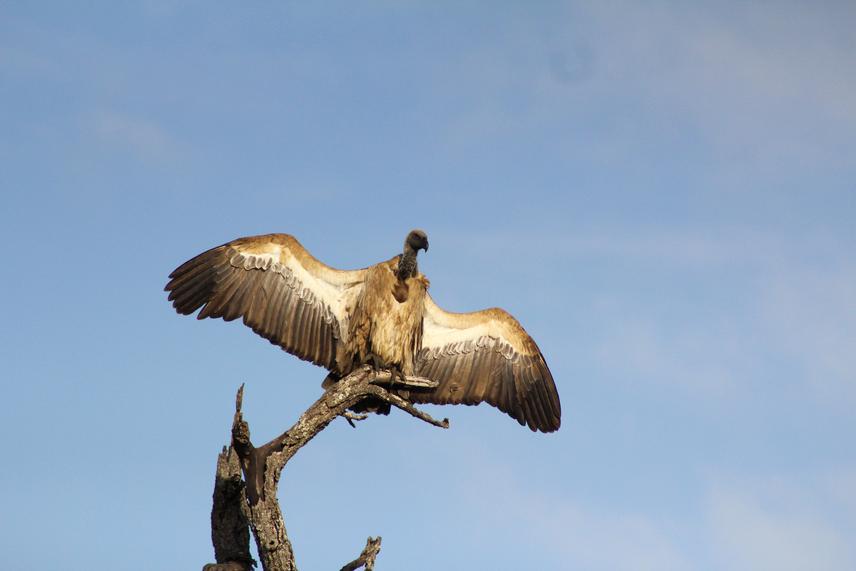Emma Laurieston
As obligate scavengers, vultures provide essential ecosystem services by consuming carrion and ridding the land of carcasses, potentially infected with harmful diseases. Vulture populations throughout Africa have seen rapid declines, with six vulture species now classed as endangered or critically endangered, due to anthropogenic activities such as poisoning, persecution, collisions with electrical infrastructure and habitat loss.
The objective of this project is to further develop vulture conservation techniques and utilise our findings to improve species management.

We aim to gain an understanding of the public attitude towards tagging vultures and other wildlife with marking methods such as GPS tracking devices and VHF collars. Tagging and marking of animals to aid in research and conservation has become increasingly popular and proved extremely useful in providing insight into the ecology of many species.
Captive-bred, rehabilitated, and wild vultures are tagged with patagial (wing) tags, which display unique identification codes that are then added to a database. Reports of sightings are commonly made by members of the public, including tourists, park rangers, farmers, and photographers, which contribute significantly to the resighting databases used in vulture conservation research. We are going to conduct face-to-face interviews and online surveys to determine the public opinion of tagging vultures for research purposes. Through this, we hope to provide people with accurate information regarding the conservation value of tagging, as well as create targeted outreach programmes to educate the public on how to accurately report vulture tag sightings.
We also aim to investigate the efficacy of vulture rehabilitation and release as a conservation tool. Using patagial tag data from the Endangered Wildlife Trust’s Vulture Resighting Database we will compare the dispersal and short-term survival of rehabilitated vultures to wild vultures. Analysing survival probabilities and dispersal is needed to understand population dynamics when managing and conserving vultures and comparing wild vultures to rehabilitated vultures will allow us to better understand post-rehabilitation survival and therefore how effective vulture rehabilitation is as a conservation tool.
An additional objective of this project is to investigate if vultures respond to auditory cues to locate carcasses. This method of foraging behaviour has been observed but not yet robustly studied. As urbanisation and development rapidly changes environmental conditions, alternative foraging methods could benefit vulture populations. Understanding aspects of vulture ecology, such as how they locate carcasses, may be useful for developing future management plans and conserving these keystone species.
Header: Tagged Vulture. © Joe van Zyl.